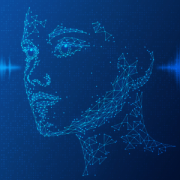Incidents involving deepfakes have become increasingly common, and the situation is expected to get worse as the AI technology enabling them continues to advance rapidly. This Advisor examines how cybersecurity vendors are integrating AI into their platforms to facilitate multimodal deepfake detection and other advanced interdiction capabilities.
The Problem
The proliferation of easy-to-use generative AI (GenAI) tools allows almost anyone with even minimal tech skills to create deepfakes in the form of AI-generated images, video, text, and audio. Uses of these synthetic media vary considerably. Some are texts carefully crafted to appear like official business correspondence to manipulate consumers or employees into disclosing private or sensitive information, such as log-in credentials or banking details. Others consist of highly realistic audio or video designed to impersonate politicians, celebrities, and CEOs. While some deepfakes serve as harmless parodies or satire for entertainment purposes, others are weaponized for fraud, reputational harm, public embarrassment, or espionage.
AI + Cybersecurity Integration for Deepfake Interdiction
To deal with the increasingly sophisticated nature of deepfakes, cybersecurity vendors are integrating AI into the various tools and components of their platforms, including:
-
Multimodal detection engines
-
Real-time threat mitigation
-
Forensic and investigative tools
-
Behavioral biometrics and voice analysis
Multimodal Detection Engines
Multimodal detection engines are designed to analyze video, audio, text, and behavioral data in tandem. These platforms provide a holistic approach to analysis and detection. By employing various AI techniques (including neural networks) and cross-referencing algorithms, they can uncover and identify inconsistencies across multiple formats, increasing their ability to determine the likelihood of a video being real or fake. This makes multimodal engines particularly useful in high-stakes applications, including corporate communications, legal, and identity verification.
For example, Reality Defender is a cybersecurity platform specializing in real-time detection of deepfakes and synthetic media across multiple formats, including text, audio, video, and images. It is designed for enterprises, government agencies, and digital platforms and features various AI models, each trained to detect unique signatures left by GenAI tools across different media types. This approach allows Reality Defender to identify impersonation attempts and manipulated media before they can cause harm, whether in call centers, video conferencing, brand protection, or identity verification. The platform is accessible via API and Web interfaces, offering flexible deployment options and continuous model updates to stay ahead of evolving threats.
(Note: Many of the other products discussed in this Advisor also employ multimodal detection capabilities and are examined in the following sections. I made it a separate category here in order to focus on the key aspects of the technology.)
Real-Time Threat Mitigation
Vendors are increasingly incorporating real-time deepfake-detection capabilities within their cybersecurity platforms. These AI-powered verification applications include CAPTCHA-style challenge techniques and live anomaly-detection systems designed to respond while digital interactions take place.
Real-time deepfake mitigation is a key development because it helps interdict deepfake threats before they can escalate. These tools can function within Web browsers or integrate with popular video conferencing systems. For example, McAfee’s Deepfake Detector runs directly in your browser, scanning media in real time using transformer-based neural networks.
Real-time deepfake-mitigation capabilities are especially important for securing corporate video conferencing and other collaboration applications, particularly in scenarios where impersonation might result in financial loss, disclosure of intellectual property, or trade secrets. For example, TC&C’s Deepfake Guard platform uses AI to analyze audiovisual, linguistic, and behavioral signals in real time. It can detect AI-created impersonations during live Zoom or Microsoft Teams sessions by assessing the authenticity of the communication itself. The platform also features a deepfake CAPTCHA engine that intervenes during live sessions, flagging suspicious behavior and prompting verification challenges.
Forensic & Investigative Tools
AI-based forensic tools are proving to be game changers when it comes to incident response. Machine learning (ML) allows corporate security analysts, legal teams, law enforcement, and other users to conduct deep analyses of digital media to determine their validity. This includes deconstructing synthetic media down to the pixel level, analyzing metadata, and performing audio analysis.
Combining different technologies is key for detecting sophisticated deepfakes: pixel analysis can detect visual inconsistencies, audio forensics can spot unnatural sound patterns, and file forensics can examine structure and metadata to uncover inconsistencies in formats and suspicious time patterns.
Forensic and investigative tools are particularly important for transforming raw intelligence into verifiable evidence that legal teams can use to support court cases involving fraud, defamation, or digital impersonation.
For example, Sensity AI offers a cloud-based platform employing deep learning neural nets for scanning uploaded files and URLs to detect deepfakes by identifying synthetic alterations in digital media. The platform uses a multilayer approach, examining pixels, file structures, and voice patterns to provide comprehensive assessment-detection capabilities. Users simply drag-and-drop files from their browser to analyze digital content in order to spot manipulations, including face swaps, lip synchs, face reenactment, and face morphing — common alterations used to create deepfake images and videos. Sensity AI targets heavy digital forensics users like law enforcement, know your customer (KYC) vendors, social media platforms, insurance companies, and defense and intelligence agencies.
Another interesting vendor is pi-labs, an Indian start-up offering several tools, including Authentify and pi-sense, which both use AI algorithms to verify evidence and detect synthetic media. Pi-sense caters to law enforcement and intelligence agencies and the banking, financial services, and insurance sectors.
Behavioral Biometrics & Voice Analysis
Hackers are increasingly using highly sophisticated deepfakes that closely mimic the physical and vocal traits of their targets. In particular, over the past year, voice-based spoofing attacks and impersonations have increased due to the proliferation of voice-cloning tools.
Security vendors are using behavioral biometrics and voice analysis to thwart such attacks. These techniques utilize ML and other AI techniques to analyze the physiological and behavioral patterns of human subjects represented in synthetic media. This includes analyzing eye movement and other micro-expressions and acoustic patterns to identify anomalies in facial movements and speech patterns.
Nuance Gatekeeper is a cloud-based biometric authentication and fraud-detection platform for securing customer interactions across voice, digital, and messaging channels. It is designed to replace traditional authentication methods (i.e., passwords and security questions) with a more comprehensive AI approach that can detect deepfakes and synthetic impersonations: voice biometric models analyze hundreds of vocal features (e.g., pitch, cadence, spectral patterns) to authenticate users in real time; facial biometrics use computer vision to assess real-time facial movements and micro-expressions for liveness and authenticity; and conversational biometrics apply natural language processing to evaluate how individuals use language (e.g., grammar, word choice, and sentence structure).
This combined approach makes it difficult for hackers to mimic not just a person’s voice but their unique communication style, making Gatekeeper an effective tool for detecting deepfakes, synthetic speech, social engineering, and spoofing attacks. Gatekeeper is utilized in sectors like finance, healthcare, and telecom, where secure identity verification is critical.
iProov is another advanced biometric-verification platform. It uses the company’s patented AI-powered “dynamic liveness detection” technology to confirm a user’s identity in real time. By projecting random light patterns onto a face and analyzing the reflections, iProov can determine if the person is the correct individual and physically present (in a job interview, for example) as opposed to someone wearing a mask, a recorded video or audio replay, or other deepfake scam. This technique, combined with facial-recognition and micro-expression analysis, can overcome impersonation attempts by detecting nuanced details that deepfakes and other synthetic media are not currently able to replicate (at least not yet). iProov is used by governments and high-security institutions for remote onboarding, identity assurance, and fraud prevention.
Conclusion
The growing sophistication of GenAI has given rise to deepfakes and other synthetic media that can convincingly imitate human voices, faces, and conversational patterns, posing new threats to privacy, security, and public trust. In response, cybersecurity vendors are bolstering their platforms with AI-driven multimodal detection, real-time threat mitigation, forensic and investigative tools, and behavioral biometrics and voice analysis capabilities. By combining these technologies, these platforms now offer individuals, companies, and government agencies enhanced safeguards and protection against scams and other manipulation by bad actors using deepfakes and other synthetic media.
Finally, I’d like to hear your thoughts on the threat posed by deepfakes and the effectiveness of current (and emerging) cybersecurity tools designed to counter them. As always, your comments will be held in strict confidence. You can email me at experts@cutter.com or call +1 510 356 7299 with your comments.



